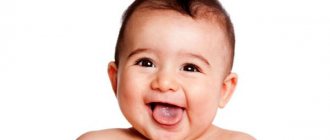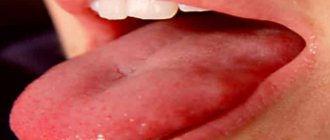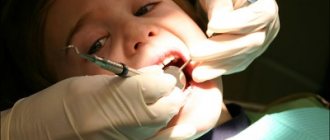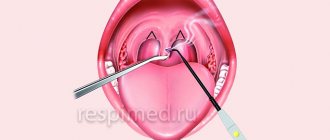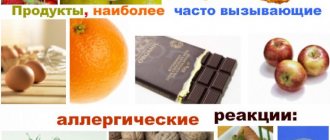If on child's language bubbles appear, do not try to get rid of them yourself. Surely there were reasons for their occurrence, and only a specialist can accurately determine them. First, the doctor must find out what exactly triggered the formation of painful blisters on the child’s tongue. The reasons vary. Most often, white blisters appear due to a fungal infection or thrush. Also, their occurrence could be detected by severe dysbacteriosis or as an allergy. It should be noted that most allergic reactions manifest themselves in the form of urticaria, diathesis or dermatitis.
Causes of bubbles on a child’s tongue
In order to help the child as quickly as possible and prescribe appropriate treatment, it is necessary to determine the causes of the formation of bubbles on the child’s tongue. The very first reason why the mucous surface of a child’s tongue becomes covered with pimples is thrush. Often, this disease affects young children whose immunity is severely weakened. Small white bubbles form not only on the surface of the tongue, but throughout the entire oral cavity.
Treatment consists of frequent wiping of the mouth with a tetraborate solution, which contains glycerin. Sometimes doctors prescribe glycerin-based borax. All these drugs are easily available and are available even without a doctor's prescription. Therapy is carried out as follows. Take a piece of clean bandage and wrap it around your index finger, then moisten it generously in the liquid and gently wipe your tongue, and then your entire mouth. Try not to press on the tongue as this may trigger the baby's gag reflex. A similar treatment of the oral cavity should be carried out after each meal.
Signs of mastitis in newborns
- when touching the mammary glands, the baby cries;
- as a rule, the infection penetrates into one of the glands (much less often it affects both), due to which the mammary gland becomes denser, the baby develops severe pain when touched;
- in the area of infection the skin turns red;
- The baby’s body temperature rises to 39 °C;
- the child cries when he is swaddled or changed;
- the baby refuses to breastfeed and becomes lethargic;
- later, pus accumulates at the site of infection; when pressure is applied to this area, the child screams very loudly and experiences pain;
- with purulent mastitis, pus may spontaneously (without pressure) be released from the nipples of a newborn.
This condition is extremely dangerous for a child. Therefore, at the first symptoms of mastitis, you should consult a pediatrician or call an ambulance. If help is not provided in time, the pus can melt the tissues near the mammary gland and penetrate into its other parts. This condition can lead to a diagnosis of phlegmon of the chest wall - purulent inflammation of fatty tissue. More serious conditions that mastitis in a newborn can lead to are sepsis and generalized infection (spread of infection throughout the body), which threatens the life of the child.
For a newborn girl, mastitis is more dangerous than for a boy: if the acini (components of the mammary gland) die during the disease, connective tissue appears in their place. In this case, when the girl grows up, her breasts will most likely develop asymmetrically. And during breastfeeding, an adult woman runs the risk of serious lactostasis (milk stagnation), which will be difficult to cure without surgery.
Another reason for the formation of pimples on a baby’s tongue is dysbacteriosis.
With dysbacteriosis, pimples cover the mucous membrane of the child’s tongue and externally resemble small ulcers. Treatment should be started immediately, since such bubbles cause severe pain.
In cases where pimples turn into ulcers, you should pay attention to the condition of the child’s intestines. After all, it is possible that exactly the same ulcers appear there as on the surface of the tongue. Therefore, if you notice even small pimples on a child’s tongue, you should undergo an examination of the whole body. This will allow us to determine the causes of this phenomenon and begin appropriate treatment.
Symptoms of atheroma in children
In 80-85% of cases, apart from the visual defect, children do not present any other complaints. Uncomplicated atheroma is characterized by:
- painlessness;
- mobility;
- elasticity upon palpation.
The skin over the surface of the tumor is smooth and does not fold. The clinical picture may change when the contents of the atheroma become inflamed against the background of the addition of bacterial flora. In this case, patients may note:
- pain when pressed;
- redness and increase in size of the tumor itself;
- local increase in body temperature.
If the above symptoms occur, you should immediately seek help.
This situation threatens the penetration of infection into nearby tissues and blood with the spread of microorganisms to distant areas of the body and can cause a deterioration in the general condition of the child. Atheromas occur in areas of the skin that are rich in sebaceous glands. Therefore, they especially often have the following localization:
- scalp;
- face and neck area;
- shoulder girdle, armpit area;
- back.
Neoplasms occur less frequently in the groin area and scrotum (in boys). In these areas they have the appearance of a skin growth and require differential diagnosis with other skin tumors.
To cure blisters on a child's tongue
In order to eliminate bubbles on a child’s tongue that have formed due to dysbiosis, it is first necessary to undergo treatment aimed at restoring full intestinal functions. If this is a small child, then first you need to deal with nutrition. For example, you can add white cabbage to the cutlets, previously minced through a meat grinder. Cabbage plays the role of a “broom” and removes all harmful elements from the children’s intestines.
If we are talking about the digestion process of infants, then the mother should reconsider her diet. Treatment of blisters can be carried out only after consultation with a doctor. The specialist will select the drug that will not harm the baby.
Treatment of atheroma in children
The optimal method of treating atheroma in children is its surgical removal.
However, the age of the patient decides a lot here. Thus, most pediatric surgeons, in the absence of severe clinical symptoms, recommend a wait-and-see approach. Sometimes the swelling may resolve on its own. This is especially true for newborns and infants. In such cases, the development of the neoplasm is observed until the age of three, and if it persists, only then is it removed. Surgical intervention can be carried out traditionally using a scalpel or minimally invasively using a laser. In the first case, the surgeon excises the tumor with a capsule, which eliminates the risk of relapse. After this, cosmetic stitches are applied to the tissue to achieve the best aesthetic result.
Laser removal in children is used for small tumors. Using this technique, it is possible to avoid incisions and the formation of postoperative scars. In both cases, a comprehensive examination of the child is first carried out with the selection of the optimal treatment option.
In the postoperative period, the child may be prescribed the following groups of medications:
- painkillers;
- anti-inflammatory;
- antibacterial.
Drug therapy is aimed at eliminating discomfort and preventing infection of the postoperative wound.
Quite often, children develop pimples on their tongues caused by an allergic reaction of the body.
If there is an allergy, the child's tongue becomes covered exclusively with white blisters. This is their main feature. First, you need to exclude foods that could cause allergies from your diet. You will also temporarily have to give up scented soaps, powders and other detergents of synthetic origin. Believe me, regular baby soap or laundry soap will be much more beneficial in this case. Try to wet clean your home and remove dust more often. It is recommended to treat blisters on the tongue of infants with a regular soda solution.
Dear mothers, do not forget that only a qualified specialist can accurately determine the cause of bubbles on the child’s tongue and prescribe the necessary course of treatment.
Do not self-medicate at home, because the most valuable thing is at stake, namely the health of your baby! The main reasons for the formation of bubbles on a child’s tongue
Causes of atheroma in children
Atheromas in children occur due to a violation of the secretion of sebum by the corresponding glands.
When the excretory duct is blocked, the secretion of the gland has nowhere to go. It is secreted into the subcutaneous space, where a dense capsule is formed around it. Common causes of atheroma development in children are as follows:
- Using children's cosmetics (creams, ointments, moisturizing masks) in excessive quantities. Sometimes parents, in an effort to protect their child’s skin from harmful external factors, use cosmetic products uncontrollably. This leads to dysfunction of the sebaceous glands with blockage of their excretory ducts.
- Hormonal changes in the child's body. Infants and teenage children are traditionally at risk. It is during these periods that changes in the concentration of sex hormones occur. Against this background, acne appears, the function of the sebaceous glands is disrupted, and conditions are created for their blockage.
- Seborrhea. This is a dermatological disease that leads to dysfunction of the sebaceous glands in a certain area of the skin.
- Genetic predisposition or congenital structural features of the skin. Atheromas most often occur in children after 3 years of age. If neoplasms are detected in children immediately after birth, the doctor may assume the presence of problems with the sebaceous glands that developed in utero.
In addition, factors that increase the risk of developing atheromas are poor personal hygiene, metabolic disorders (obesity, diabetes) and frequent mechanical damage to the skin.
How to prevent mastitis in a newborn
- take care of your baby’s skin correctly, prepare the baby’s first clothes in advance: wash them with a special baby powder and be sure to iron them (this must also be done during the entire first month after discharge from the hospital);
- when, as a result of a hormonal crisis, the child’s mammary glands become engorged, do not touch or put pressure on them, and under no circumstances squeeze out their contents;
- dress the child in accordance with the temperature regime, do not overheat his body;
- On the eve of giving birth, get rid of long manicures and carefully treat your nails.
Features of breast swelling
Physiological mastopathy or engorgement of the mammary glands is the physiological condition of a child’s breasts, in which they increase in size. Usually the mammary glands are enlarged evenly, occasionally there is unilateral enlargement. An increase of up to 3 cm in diameter is considered normal if there is no redness or changes under the skin or on its surface.
Sometimes grayish or milky-white contents may be released from the mammary gland ducts; its composition is comparable to that of colostrum.
Typically, breasts begin to enlarge on the second day after birth, and gradually decrease from the end of the first week, but they completely disappear by the month. Such mastopathy does not require any treatment; you should not press the breasts, trying to remove milk from them, apply compresses with ointments, especially like Vishnevsky ointment, camphor and others, which is widely recommended on the Internet.
Swollen breasts do not cause any discomfort to the child, they are not treated in any special way, only with strong magnification can a clean, dry and sterile bandage be applied. It is necessary to protect the breasts from friction with clothing.
However, many parents are worried about breast enlargement and begin using bandages, squeezing out milk, secretions and fiddling with the swollen breasts, unwittingly introducing microbes into the cracks of the papillae. They penetrate deep into the chest and cause the development of a serious complication - neonatal mastitis. If its onset is neglected, the course of the disease can be severe, even fatal. How to distinguish the onset of mastitis from physiology?
Attentive attitude to the health of the child is the most important task of responsible parents.
Moreover, often any pathological conditions, and especially neoplasms, cause fear and panic not so much in the smallest patient as in the caring mother. If you notice a papilloma on your child’s face or body, you should not perceive it as something terrible. Papillomas in children are a common phenomenon that is caused by one of the most common viral agents on the planet - the human papillomavirus (HPV). We will try to figure out how to rid the baby of an unpleasant tumor and whether it is possible to prevent infection.
How is mastitis treated in newborns?
Clinical guidelines for the treatment of neonatal mastitis state that before prescribing therapy, it is necessary to establish the stage of development of the disease.
If this is the initial (infiltrative) stage, then treatment of mastitis in a newborn is recommended:
- special ointments applied to the bandage;
- ultraviolet irradiation or UHF, which has a detrimental effect on bacteria;
- compresses with magnesium to relieve swelling and pain;
- compresses of dimexide with saline as an antiseptic;
- alcohol compresses;
- Vishnevsky ointment;
- suppositories or syrup with paracetamol to relieve pain and fever;
- Treatment of neonatal mastitis can be enhanced with broad-spectrum antibiotics.
However, all of the above actions can be effective until a purulent focus has formed in the gland. If it occurs, the newborn will most likely require surgery, during which the pus will be removed and the cavity will be washed. After surgery, a bandage with a hypertonic solution will be applied to the wound. In addition, the doctor will prescribe a course of antibiotics.

